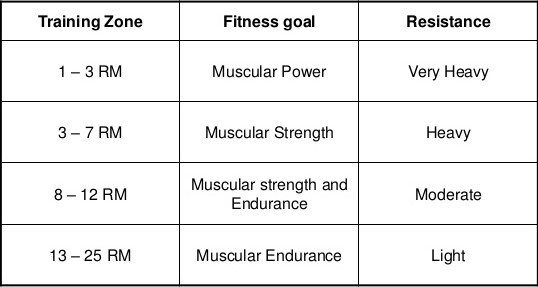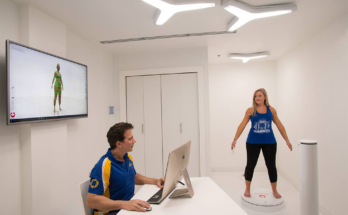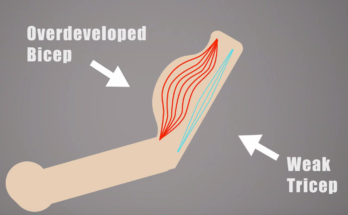
Understanding reps, sets and other variables in exercise training is important for continuing to progress and avoid plateaus. Changing how many reps you are doing for an exercise and the sets can greatly change the results you will get from your hard work.
Our bodies are designed to adapt. The driving force behind an exercise is this adaptation to stress. We introduce a form of stress (exercise) and our body must get stronger to be able to handle this new stimulus. The problem with this is once we adapt we plateau. To oversimplify this, let’s think of our exercise programs on a scale of 1-100. The first time we perform a particular routine we get 100% of the results. Maybe the second time we only get 90% of the optimal results, the third time we get 80% and so forth. People become adjusted rapidly to their routine and begin to slow down and plateau their gains. This is present in all forms of exercise, from cardio to weightlifting, to functional training styles. We must understand how to periodize or change our routine from time to time to elicit a new adaptation.
Acute Variables

To be able to modify our routines to continue to see results, we should understand the acute variables of training. These are things we can change to facilitate that adaptation response once more. Acute variables might include but are not limited too:
Amount of sets performed
Amount of reps performed
The tempo of each rep
Rest period
Exercise selection
Total time of routine
Body groups trained in each session
The frequency of exercise overall
Rep Ranges

Let’s talk about some of the acute variables of training. Probably one of the most important things to understand in exercise is what we are getting from a rep range. Choosing to perform a set of 4-6 repetitions will greatly change the results you will get than choosing a rep range of say 12 – 15. No matter what rep range we choose however, it is important that the weight is appropriate. Relatively speaking, you must choose a weight where you will fail by the end of your rep range. If you choose 4-6 reps, you ain’t getting that 7th rep! If you choose 12-15 reps, the burn should be so intense by your 15th rep that with a gun to your head you couldn’t perform another rep properly. This being said, the rep range will dictate your results.
A lower rep range of anything below 6 will yield strength adaptations. To maximize this rep range, we want to choose heavy weights and perform these exercises explosively. Let’s say you’re doing a dumbbell chest press and you want to get stronger. You might want to aim to do 4 sets of chest press with 6 or fewer reps choosing a weight that will let you fail in that range. These kind of sets are fast, maybe lasting 15 seconds at the maximum. You want to take large rests of 2-3 minutes between each set so you can fully recover your strength. Hypertrophy is another word for growth. This kind of training will physically tear your muscle fibers and cause them to rebuild stronger. This leads to denser stronger muscle. Your muscle cells are called myofibrils, this rep range leads to myofibril hypertrophy.
It’s been shown that rep ranges of 8-12 yield a muscle growth adaptation. This is a different form of hypertrophy where our muscle cells are increasing the volume of fluid inside them and growing in size. This is called sarcoplasmic hypertrophy. The sarcoplasm is the goop in your muscle cells. This is what someone like a bodybuilder wants to achieve, larger looking muscles. Larger muscles don’t equate to stronger muscles and this is important to understand. As we discussed before, to get stronger we choose a low rep scheme and that causes a different form of hypertrophy. To fully maximize the results of an 8-12 rep range, however, we want to slow down the tempo of each individual rep (a tempo of 2 second concentric with a 2-second hold and a 4 second eccentric 2-2-4). We want maximum time under tension, or the amount of time our muscle experiences stress. By going slower for each rep we are looking to increase the time of our sets to 45 seconds or more. THIS BURNS! DAYUMMNNNN THIS BURNS. Longer sets can be very painful. We also see that the weight we have to choose will be significantly lighter than if we were to choose a low rep scheme.
Rep schemes in the upper ranges like 12-20 tend to lead to endurance responses. We choose lightweight, perform a medium tempo for each rep, and look to have our sets last about a minute. This is the rep range for many endurance athletes such as rock climbers, runners, swimmers etc.

Periodization

Your goals will determine the rep range you will predominantly use during your programming. In order to prevent plateauing, we periodize or change our routines from time to time. I like to look at a person’s programming in the time span of about a year. What I will do is focus MOST months around their main focus and goal. Every few months we will visit another form of training, utilizing different rep schemes and acute variables, but we will always circle back to the training style for their specific activity. For instance, if I am training a strength athlete we might start off with 3 months of low rep strength based training followed by 6 weeks of endurance training then back to 2 months of strength training. Then we will do a month of medium rep training and back to 3 months of strength training etc. We try to time the peak of their strength training as close to events and competitions as we can so they are at their strongest when they need to perform.
By approaching programming in this way, we can be sure that you are constantly eliciting progress, training your weakest links, and maximizing efficiency.
Periodization applies to cardio as well. The purpose of cardiovascular exercise aside from burning calories is to improve heart function. We adapt to cardio just like we adapt to lifting.
Let’s say you ran a mile in 10 minutes. If you ran a mile 3 times a week but you never went for a 9-minute mile, or an 8-minute mile, you would stop seeing results from that 10-minute mile. Your body needs progress. You will adapt to running a 10-minute mile and your heart rate would reflect that.
Burning calories is a direct component of heart rate. The higher your heart rate, the more calories you are burning. It’s important to change up the kind of cardio we are doing to continue to stress our heart rate so we can optimally burn calories and improve heart health! Cardio should always be challenging and we should change what we are doing to keep it hard!
In the programming section of my website, I will provide examples of routines that periodize over a span of weeks, months, and even a year.



